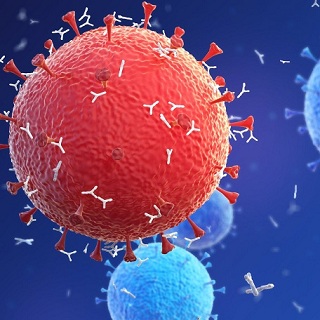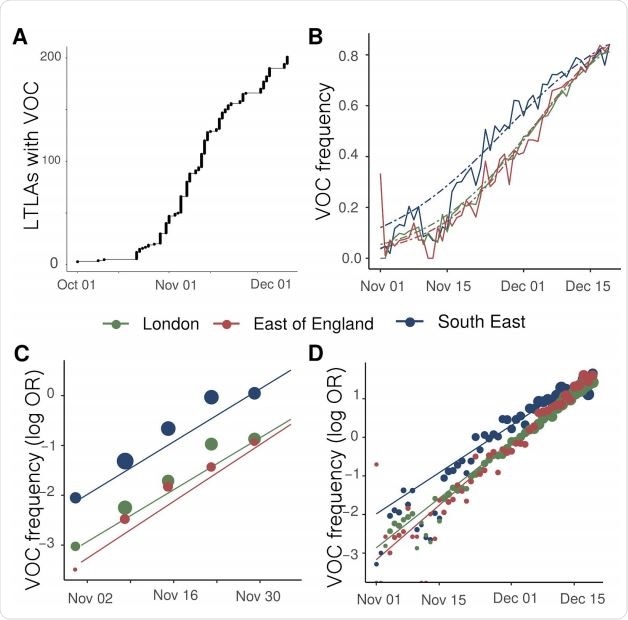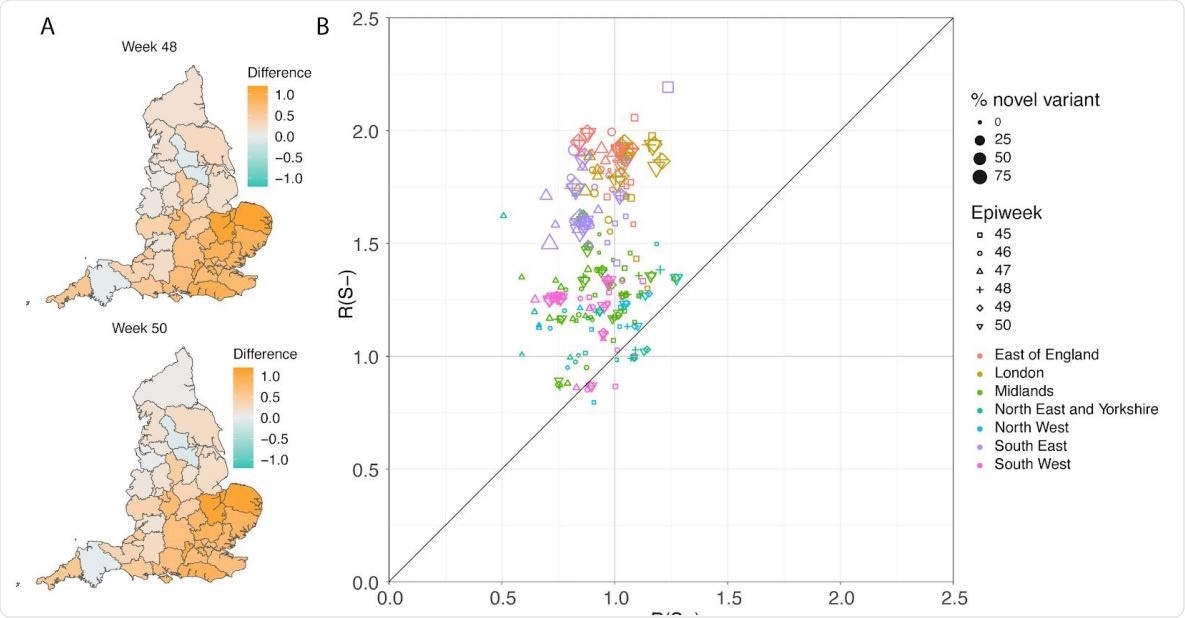SARS-CoV-2 B.1.1.7 Variant: British Scientists Warns That That Existing Non-Pharmaceutical Interventions (NPIs) May Not be Sufficient To Contain Spread
Source: SARS-CoV-2 B.1.1.7 Variant Jan 07, 2021 4 years, 11 months, 1 day, 8 hours, 15 minutes ago
SARS-CoV-2 B.1.1.7 Variant: British researchers warn that that existing non-pharmaceutical interventions (NPIs) may not be sufficient to contain the spread of the new SARS-CoV-2 B.1.1.7 variant that is fast becoming the prevailing dominant strain. The new variant has a higher binding affinity and is more infectious coupled with the fact that it has a higher replication rate.

Claims by certain so called “experts’ that the new variant is not so dangerous or fatal are misleading as it is now becoming seen that those infected with the strain displays higher viral loads which could contribute to disease severity. Claims by vaccine manufacturers and ‘unqualified’ doctors and researchers (Most probably ‘trash’ receiving payments by the vaccine manufacturers!) claiming that the current vaccines will also work on these new variants or published by garbage media are also fake or misleading as there are no proven studies to prove those statements. Currently we do not even have proof or know if these vaccines will work on the existing SARS-CoV-2 strains even! The clinical trial findings are one thing but real scenario is a different setting.
The new SARS-CoV-2 lineage B.1.1.7, now designated Variant of Concern 202012/01 (VOC) by Public Health England, originated in the UK in late Summer to early Autumn 2020.
The study team examined epidemiological evidence for this VOC having a transmission advantage from several perspectives:
-1) Whole genome sequence data collected from community-based diagnostic testing provides an indication of changing prevalence of different genetic variants through time. Phylodynamic modelling additionally indicates that genetic diversity of this lineage has changed in a manner consistent with exponential growth.
-2) The team found found that changes in VOC frequency inferred from genetic data correspond closely to changes inferred by S-gene target failures (SGTF) in community-based diagnostic PCR testing.
-3) The study team examined growth trends in SGTF and non-SGTF case numbers at local area level across England, and show that the VOC has higher transmissibility than non-VOC lineages, even if the VOC has a different latent period or generation time. Available SGTF data indicate a shift in the age composition of reported cases, with a larger share of under 20 year olds among reported VOC than non-VOC cases.
-4) The team assessed the association of VOC frequency with independent estimates of the overall SARS-CoV-2 reproduction number through time.
-5) The study team also fitted a semi-mechanistic model directly to local VOC and non-VOC case incidence to estimate the reproduction numbers over time for each. There is a consensus among all analyses that the VOC has a substantial transmission advantage, with the estimated difference in reproduction numbers between VOC and non-VOC ranging between 0.4 and 0.7, and the ratio of reproduction numbers varying between 1.4 and 1.8.
The team notes that these estimates of transmission advantage apply to a period where high levels of social distancing were in place in England; extrapolation to other transmission contexts therefore requires caution.
The study findings were published on a preprint server and
are currently being peer reviewed.
The researchers in the UK have conducted a comprehensive epidemiologic analysis of the new SARS-CoV-2 variant in an effort to learn more about the expanded range and frequency of coronavirus disease 2019 (COVID-19) cases in England.
The SARS-CoV-2 lineage B.1.1.7, which was first detected in the UK in November 2020, has been designated Variant of Concern 202012/01 (VOC) by Public Health England.
The study team’s analysis of VOC whole genomes identified an increased frequency in the variant that is consistent with a transmission advantage over other SARS-CoV-2 variants in the UK.
Interestingly the estimated difference in reproduction number (number of new infections arising from a single case of infection) between the VOC and non-VOC lineages ranged between 0.4 and 0.7.
The study team from Imperial College London, the University of Edinburgh, Public Health England, the Wellcome Sanger Institute, and the University of Birmingham warns that this substantial transmission advantage will pose major challenges for the ongoing control of COVID-19 in the UK and elsewhere over the coming months.
Significantly, the study team found evidence that while non-pharmaceutical interventions (NPIs) were sufficient to control non-VOC lineages during the November 2020 lockdown in England, they were not sufficient to control the VOC.
Corresponding author Dr Neil Ferguson from the MRC Centre for Global Infectious Disease Analysis, Jameel Institute for Disease and Emergency Analytics, Imperial College London
warned that social distancing measures will need to be more stringent and that policy decisions will need to be informed by urgent epidemiological investigations into the new variant.
The new VOC possesses several advantageous mutations.
It was reported that as of 20th December 2020, the regions in England with the highest number of confirmed cases of the new variant were London, the South East, and the East of England.
 Expansion and growth of the VOC 202012/01 lineage. A) The number of UK LTLAs reporting at least one sampled VOC genome. B) Empirical (solid) and estimated (dash) frequency of TPR-adjusted SGTF in three regions of England. C) Empirical (points) and estimated (line) frequency (log odds) of VOC inferred from genomic data by epidemiological week. D) Empirical (points) and estimated (line) frequency (log odds) of SGTF based on the same data as B.
Expansion and growth of the VOC 202012/01 lineage. A) The number of UK LTLAs reporting at least one sampled VOC genome. B) Empirical (solid) and estimated (dash) frequency of TPR-adjusted SGTF in three regions of England. C) Empirical (points) and estimated (line) frequency (log odds) of VOC inferred from genomic data by epidemiological week. D) Empirical (points) and estimated (line) frequency (log odds) of SGTF based on the same data as B.
The new variant possesses a large number of non-synonymous substitutions that are of immunologic significance because they increase host cell binding and infectivity.
https://www.thailandmedical.news/news/u-s-cdc-indicates-that-vaccines-might-not-protect-against-new-uk-variant-b-1-1-7-new-details-show-new-variant-could-be-the-expected-super-strain
Importantly one deletion mutation that occurs at positions 69 and 70 (Δ69-70) on the viral spike protein (which binds host cells) has been associated with the failure of diagnostic PCR tests that probe this protein.
Dr Ferguson told Thailand Medical News,
“The absence of detection of the S gene target in an otherwise positive PCR test increasingly appears to be a highly specific marker for the B.1.1.7 lineage. Surveillance data from national community testing (‘Pillar 2’) showed a rapid increase in S-gene target failures (SGTF) in PCR testing for SARS-CoV-2 in November and December 2020.”
The study team used various statistical approaches to assess the association between the intensity of SARS-CoV-2 transmission and the frequency of the VOC, B.1.1.7, between November and December 2020 across different regions of the UK.
The study team’s analysis of whole-genome sequence data collected from community-based diagnostic testing showed that VOC sequences were widely distributed across 199 lower tier local authorities (LTLAs) in England. The sequences were most concentrated in the South East (n=875), London (n=636), and East of England (n=293).
Dr Ferguson added, “While rapid growth of the variant was first observed in the South East, similar growth patterns are observed later in London, East of England, and now more generally across England.”
The study team says the growth of the VOC lineage is consistent with it having a transmission advantage over other circulating SARS-CoV-2 lineages in England.
The team next investigated time trends in the proportion of PCR tests exhibiting SGTF across 275,000 test results.
 (A) Map of the difference in median Rt estimates for VOC and non-VOC variants for all STPs for weeks 48 and week 50. (B) Scatterplot of the reproduction numbers of VOC (S-) and non-VOC (S+) by STP and week. Point size indicates frequency of the VOC, while shape and colour signify week and NHS region, respectively.
(A) Map of the difference in median Rt estimates for VOC and non-VOC variants for all STPs for weeks 48 and week 50. (B) Scatterplot of the reproduction numbers of VOC (S-) and non-VOC (S+) by STP and week. Point size indicates frequency of the VOC, while shape and colour signify week and NHS region, respectively.
The observed changes in VOC frequency inferred from the genetic data closely corresponded with the changes inferred by SGTFs in community-based diagnostic PCR testing.
Also by examining growth trends in SGTF and non-SGTF case numbers at the local area level across England, the team showed that the VOC exhibits higher transmissibility compared with non-VOC lineages. The SGTF data also indicated a small but significant shift towards those aged under 20 years being more affected by the VOC than non-VOC variants, even after adjusting for variation by week and region.
The team also performed regression analyses to explore the effect of VOC frequency on the overall time-varying reproduction number. The analyses were conducted at two different spatial scales – LTLAs and NHS England Sustainability and Transformation Plan areas (a subdivision of NHS Regions).
Importantly across almost every area analyzed, the researchers observed a very clear visual association between SGTF frequency and epidemic growth of the VOC.
The study team said that across all of the analyses conducted, the VOC was found to have a strong transmission advantage, with the estimated difference in reproduction numbers between the VOC and non-VOC lineages ranging from 0.4 to 0.7.
The study team warned, “The substantial transmission advantage we have estimated the VOC to have over prior viral lineages poses major challenges for ongoing control of COVID-19 in the UK and elsewhere in the coming months. Critically, we find evidence that non-pharmaceutical interventions (NPIs) were sufficient to control non-VOC lineages to reproduction numbers below 1 during the November 2020 lockdown in England, but that at the same time, the NPIs were insufficient to control the VOC.”
The team said that social distancing measures will need to be stricter than they would otherwise have been.
The team concluded, “These policy questions will be informed by the ongoing urgent epidemiological investigation into this variant, most notably examining evidence for any changes in severity, but also giving more nuanced understanding into transmissibility changes. A particular concern is whether it will be possible to maintain control over transmission while allowing schools to reopen in January 2021. These policy questions will be informed by the ongoing urgent epidemiological investigation into this variant, most notably examining evidence for any changes in severity, but also giving more nuanced understanding into transmissibility changes, for instance in the household setting.”
Please help to support and sustain this site and all our research initiatives by making a kind and generous donation.
https://www.thailandmedical.news/p/sponsorship
For more on the
SARS-CoV-2 B.1.1.7 Variant, keep on logging to Thailand Medical News.


